Sprinting & Hillclimbing
Probably the cheapest form of motorsport to be enjoyed. Paul Monis guides us through the basics.
The motorsport section of the Gassing Station has one topic which appears to come back round frequently: how do I start sprinting and hillclimbing? So, here's my potted guide to getting started.
Collectively known as Speed Events, Sprints and Hill climbs are essentially the same thing. The aim is to cover a measured tarmac course against the clock. Cars start separately but there can be a number of cars on the course at the same time, although there will obviously be a safe distance between each car.
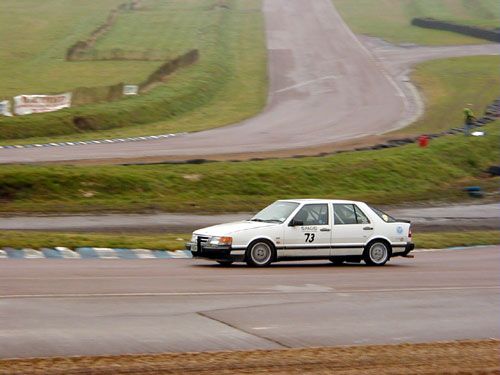
Courses use a standing start and a flying finish. The timing for most events will be to 1/100th of a second and is always activated by a timing strut on the front of the car breaking a light beam at the start and the finish lines. The course will be fully marshalled. Venues will vary from Operational Airfields (Hullavington, RAF Colerne) to race circuits (Three Sisters, Castle Combe) and closed roads on private estates such as Shelsley Walsh and Prescott.
How do I start?
So how do you start competing?, having just completed my first year of sprinting I can tell you how I did it and offer advice from a novice perspective. The first thing any aspiring competitor should do is join their local motor club and make their intentions known to the Competitions Secretary.
Then apply for a Competition License from the Motor Sports Association (MSA). Details of your local motor club can be found on the MSA website and the license required, at a minimum, is a Non-race National B License which is around £30. You can download a license application form and application form completion notes from the MSA website. With your license you will also receive a copy of the “Competitors Yearbook”, affectionately referred to as “The Blue Book”. The Blue Book contains every detail and regulation covering each aspect of motor sport in Britain, from the measurements of a roll bar to the penalties you can accrue on a Rally.
When & Where?
The Competitions Secretary of your local motor club will be able to provide you with a calendar of events for the forthcoming season. They will also be able to advise you of events which although organised by another motor club, are open to members of your motor club. Finally, you will be told roughly how soon before an event the Supplementary Regulations are made available to the competitors. The Supplementary Regulations refer to the document issued before the event and will usually include;
- Who is organising the event and the clubs invited
- The class structure
- Championship rounds at the event
- The schedule for the day
- An entry form
Before the Event
You are always advised to complete the entry form as soon as regulations permit because most events will be over-subscribed. Once the entry form has been completed and you have sent off the cheque to pay for your entry, you should refer to the sections of the Blue Book which apply to you because you must ensure the car is eligible for the class you have entered. It is your responsibility to ensure the car complies with the regulations. The Blue Book contains the measurements for the timing strut which must be fitted to the front of the car. This can be made with an off cut of an aluminium sheet.
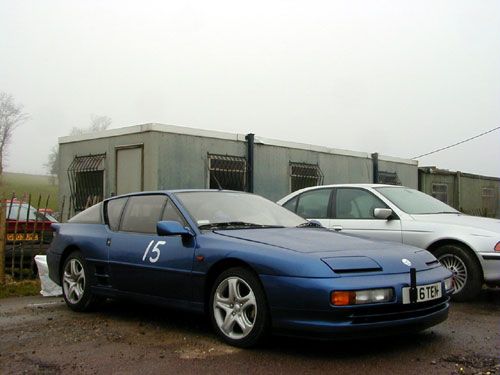
Almost any car can compete in a sprint or hillclimb - there are classes to cover cars from the smallest, unmodified, family hatchbacks to ex Formula One single seaters. The following classes are typical, but not in any way the compulsory of a sprint or hillclimb meeting entry list. Each class is further divided by engine capacities;
Class A - Road going production cars
(1)up to 1400cc, (2)1400cc to 1800cc ,(3)1800cc to 2600cc and (4)over 2600ccClass B - Road going Kit and replicas
(1)Up to 1400cc, (2)1400cc to 2000cc, (3)over 2000ccClass C - Modified production cars
(1)up to 1400cc, (2)1400cc to 1800cc , (3)1800cc to 2600cc and (4)over 2600ccClass D - Sports Libre (also referred to as Hillclimb Super Sports or Clubmans)
(1)up to 1700cc and (2)over 1700ccClass E - Racing cars
(1)up to 600cc, (2)600cc to 1100cc, (3)1100cc to 1600cc, (4)1600 to 2000cc, (5)over 2000cc
Sharing
Unlike at a motor race, two drivers can share a single car at a sprint or hill climb. To do this the organisers will usually run one driver out of position in the schedule. Both drivers will share a number but one competitors number will be followed by a letter to distinguish between the two. One driver will run out of schedule and amongst the cars in the preceding class to allow the other driver to run in the correct position in the schedule.
I competed in my first sprint sharing a friend’s car. As neither of us had competed before it helped to settle our nerves as we only had to worry about the one car. We could also compare experiences of driving the car and suggest ways to improve our times.
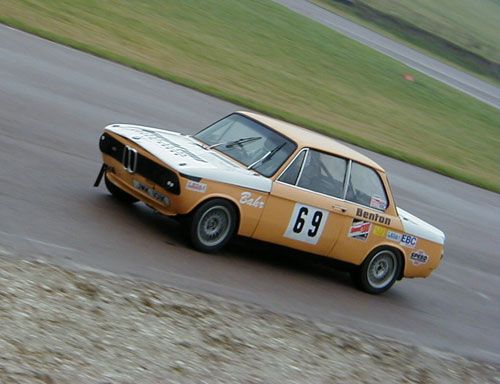
For the second sprint of the year I used my own car. My only car!. A road going Peugeot 205 GTI; the car is completely unmodified. To compete in a road going class you are not obliged to make any changes to the car, indeed there is very little you can do to the car and remain within the regulations of the class. There is no requirement to fit a roll cage or other safety equipment and you are not allowed to make any performance enhancing modifications. It really is possible to compete in your everyday road car driven to and from the event, more importantly, it is possible to compete on a level field within your class.
Helmets
Before the event you will need to purchase a helmet and a set of flame-resistant overalls. Once again the Blue Book contains a great deal of information regarding the safety specification of helmets but for reference, the following are acceptable for ALL MSA events at the time of writing (Nov 2003):
- SNELL SA95
- SNELL SA2000
- BS 6658 Type A/FR
- BS 6658 – 85 Type A (Type B is not acceptable)
Helmets can range from £100 to £1000 but it is more important to have a helmet which is comfortable than one which looks stylish. Take time to try many different helmets on and treat it with care once purchased.
For any speed or hill climb event, you will require a set of “flame resistant” race suit, note you do not require a “fire-proof” racesuit. There will be a label, usually on the neck of the garment, which will identify the safety standard of the race suit. For reference the following are acceptable for ALL MSA endorsed speed and hill climb events (Nov 2003):
- BS6249 part 1 index A or B (but not part C)
- BSEN533
- PR EN533:1995 Index 3
- FIA Standard Overalls
Like helmets, overalls can range from as little as £50 to as much as £800. Again you must ensure the pair you have are comfortable, especially whilst in a seated position, and again you should treat them with care once purchased.
Final Instructions
You will receive the Final Instructions shortly before the event. The Final Instructions will include most of the information from the Supplementary Regulations but it will also feature an entry list and the other competitors at the meeting. You will see which drivers are in your class and what cars you will be competing against.
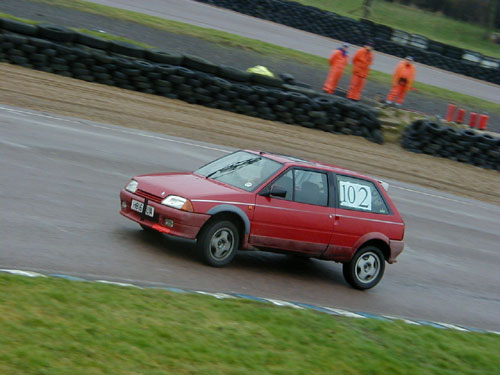
The Final Instructions will contain a timetable of the day so you can see at a glance, where you are supposed to be throughout the day. Don’t worry however, almost every meeting will have a Public Address system relaying instructions from the Clerk of the Course to Competitors.
The Final Instructions will also advise of your number at the event. You can purchase ready made numbers from a motor sport accessories stockist, or you can use black tape to create your own. I used large numbers printed onto A4 paper stuck to my rear window when using the Peugeot!
The evening before an event, you should ensure that your license, helmet and overalls are packed up, you have the numbers for your car and the timing strut is ready to be fixed to the car at the venue. Any tools you will be taking should be packed up ready and remember you will also need food and drink to last the day!
At the Event
For this imaginary event, let us presume you are using your road car and have entered in class A(2). When you arrive at an event, you will find the paddock area has been equally split amongst competitors and your number will correspond with an area of the paddock. Having found your allocated spot, your first task is to sign on. This will involve showing you licence to one of the officials at the meeting, and simply signing the entry sheet.
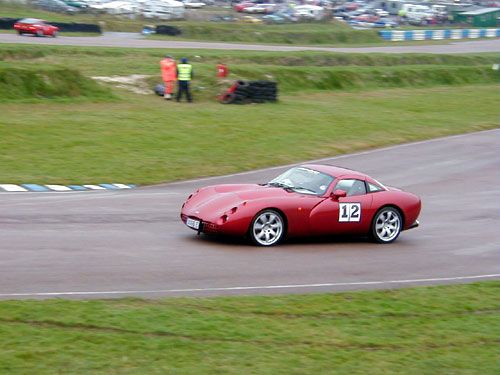
You are then free to prepare your car before scrutineering. Scrutineering will involve presenting your car, helmet and overalls to an Official at the meeting to ensure everything is considered competition-worthy. It will also involve a noise test. The level of which will be stated in the Final Instructions and will vary in decibels from venue to venue. A road going car should pass a noise test comfortably. If all is satisfactory, you will be given a sticker which indicates the vehicle has passed scrutineering and should be displayed in a prominent location on the car.
Should you fail scrutineering for any reason, you will be allowed a period of time to rectify the problem and present your car for a second time. If you are in doubt your car will pass scrutineering you should seek advice before the event - a member of your motor club will be able to help as most people will have experienced the scrutineering and can advise on any problems they forsee you encountering.
Once you have passed scrutineering, you can begin preparations for your first practice run. Almost every sprint and hill climb will consist of two practice runs and two timed runs. All four runs will in fact be timed, but only the final two runs will count. The first two runs allow you to develop a feel for the course and you can build yourself up to a steady pace and decide which racing line to take for your final two timed runs. Cars will run in numerical order.
Ready to Roll
Drivers will be called to the holding area between the paddock and the start line by a public address announcement. Usually, it is a good idea to study the entry list and find a recognisable car which is some ten or fifteen cars ahead of you in the schedule. When that driver is preparing to make their way to the holding area, you should be aware that you will be called to follow shortly. Event organisers do not look fondly on competitors who present themselves at the start line out of order and out of class.
If you are running in class A(2), you will have a low number and will feature early on the event schedule completing your practice runs quite early in the mornings proceedings. If you were one of the first cars to complete a practice run, you will be one of the first to complete a timed run as the afternoon should mirror the running order of the morning!.
Lunch
There will normally be a lunch break between the two practice runs and the two timed runs. This is a chance to relax and enjoy the friendly atmosphere of sprints and hill climbs. Other competitors will be able to offer advice and you can also use the time to check your car once again and make any adjustments you feel necessary such as tyre pressures.
Running early on the event schedule might mean having to make your way to the holding area before the end of the lunch break as the organisers will want to make a prompt start to the afternoons timed runs. After your first timed run you can return to the paddock area, relax and consider what you can do in your second run to go even faster. It will seem like minutes, but the rest of the field will have completed their first timed run and you will be in the queue waiting for your second run.
Once you have completed your final run, you can relax and change into more comfortable clothing. The results of the runs will be displayed close to the administration area of the event. You should not have to wait long after each of your run before the times are displayed and you will be able to see your time in comparison to the other competitors in the same class.
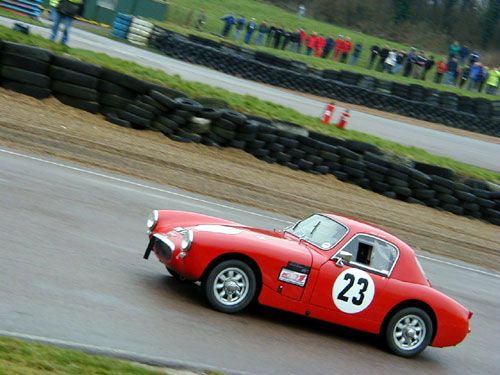
Prior to your second, third and final runs, you will know your relative position in the class but any driver competing in their first few events should try to simply better their own time on each run. Too much exuberance could result in a costly accident!
Complete results are sent out after the event and over a period of time you'll get to know the names and faces of those that you're competing against. It's a competitive form of motorsport but very socialable too.
Finally, remember to drive home at a more sedate pace than you've been driving during the day!
So there we have it. It's probably the most affordable form of competition and a great way to make the step from track days to competition.
Links : www.msauk.org , Sprinting & Hillclimbing Links
 )
) Also we both fancy something RWD.
>> Edited by jackass on Monday 8th December 10:48
Gassing Station | General Motorsport | Top of Page | What's New | My Stuff



